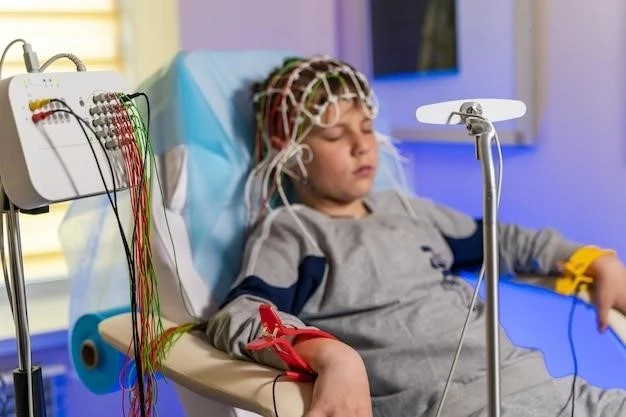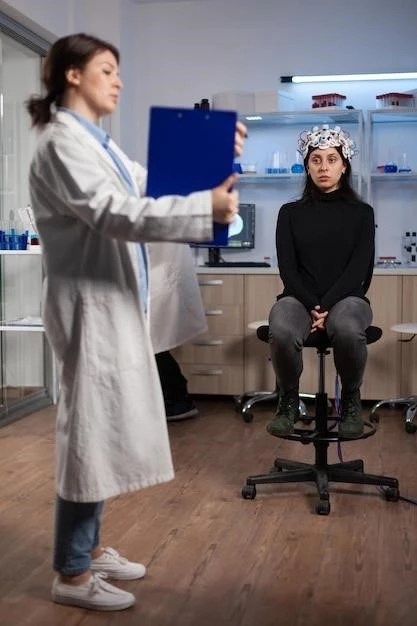Hemiplegia
Hemiplegia, also referred to as Hemiparesis, is a neurological disorder resulting from a cerebrovascular accident such as stroke. It causes paralysis or weakness on one side of the body due to brain damage. This article will explore the understanding, types, symptoms, treatment options, and management of Hemiplegia, as well as its complications, prevention strategies, and ongoing research and innovations in the field.
Introduction
Hemiplegia, a form of paralysis, is a debilitating condition characterized by muscle weakness or total paralysis on one side of the body. It typically results from a neurological event like a stroke, leading to damage in the brain which affects motor function. This condition can significantly impair mobility and daily activities, necessitating comprehensive rehabilitation strategies. Hemiplegia can be challenging to manage due to associated muscle stiffness and neurological damage. Understanding the causes, symptoms, and treatment options for Hemiplegia is crucial for individuals affected by this condition and their caregivers. Effective therapies such as physical therapy and occupational therapy play a vital role in improving the quality of life for those living with Hemiplegia. In this article, we will delve into the various aspects of Hemiplegia, ranging from its types and diagnosis to treatment options, complications, prevention measures, and the latest advancements in research and innovation aimed at enhancing the care and outcomes for individuals with this condition.
Understanding Hemiplegia
Hemiplegia is a condition characterized by severe weakness or complete paralysis affecting one side of the body. This neurological disorder most commonly occurs as a result of a stroke, also known as a cerebrovascular accident, where the blood supply to a part of the brain is interrupted, leading to brain damage. The areas of the brain responsible for controlling motor function on the opposite side of the body from where the damage occurred are impacted, resulting in the manifestation of Hemiplegia. The affected individual may experience muscle stiffness, difficulty moving limbs, and challenges with coordination and balance. Hemiplegia can significantly impact daily activities and quality of life, requiring a multidisciplinary approach to management. Understanding the underlying mechanisms of brain damage and motor impairment in Hemiplegia is essential for developing effective treatment strategies aimed at improving mobility and function in affected individuals. Through advancements in neurological rehabilitation techniques and ongoing research efforts, there is hope for enhancing the outcomes and quality of life for those living with Hemiplegia.
Types of Hemiplegia
Hemiplegia can be categorized into different types based on the underlying cause and severity of the condition. One classification distinguishes between spastic and flaccid Hemiplegia, where spastic Hemiplegia involves muscle stiffness and increased muscle tone, often seen in conditions like stroke. On the other hand, flaccid Hemiplegia is characterized by reduced muscle tone and weakness, commonly associated with conditions such as peripheral nerve injuries. Additionally, Hemiplegia can be classified as congenital if present from birth or acquired if it develops later in life due to an injury or medical condition like a stroke. Understanding the different types of Hemiplegia is crucial for tailoring treatment approaches to address the specific needs and challenges faced by individuals with this condition. By identifying the type of Hemiplegia present and its underlying characteristics, healthcare professionals can develop personalized care plans aimed at optimizing functional outcomes and enhancing overall quality of life for those affected by this neurological disorder.
Symptoms and Diagnosis
Individuals with Hemiplegia may present with a range of symptoms affecting one side of the body, including muscle weakness, paralysis, muscle stiffness, and difficulties with coordination and balance. These symptoms can significantly impair mobility and the performance of daily activities. The diagnosis of Hemiplegia typically involves a thorough physical examination, neurological assessment, and imaging studies such as MRI or CT scans to identify brain damage or abnormalities that may be causing the condition. Healthcare professionals will also evaluate the individual’s medical history, including any previous instances of stroke or neurological disorders. Additionally, assessing the severity and extent of motor function impairment through standardized assessments like the Fugl-Meyer Assessment can aid in determining the impact of Hemiplegia on the individual’s physical capabilities. Early and accurate diagnosis of Hemiplegia is vital for initiating appropriate treatment interventions and rehabilitation strategies aimed at improving motor function, mobility, and quality of life for individuals living with this neurological disorder.
Treatment Options
The management of Hemiplegia involves a comprehensive approach aimed at addressing the underlying causes and symptoms of the condition to optimize outcomes and improve quality of life for affected individuals. Treatment options for Hemiplegia may include physical therapy, occupational therapy, medication to manage spasticity, and assistive devices to support mobility and daily activities. Physical therapy plays a crucial role in enhancing muscle strength, flexibility, and coordination through targeted exercises and rehabilitation techniques. Occupational therapy focuses on improving the individual’s ability to perform activities of daily living and promote independence. In some cases, medications such as muscle relaxants or botulinum toxin injections may be prescribed to alleviate muscle stiffness and spasticity. Assistive devices like braces, splints, or mobility aids can aid in improving mobility and function. Surgical interventions may be considered for severe cases of spasticity or contractures. The selection of treatment options for Hemiplegia is based on the individual’s specific needs, severity of symptoms, and overall health condition, with the goal of maximizing functional independence and quality of life.
Management of Hemiplegia
The management of Hemiplegia requires a multidisciplinary approach to address the complex needs of individuals affected by this condition. Comprehensive care includes physical therapy and occupational therapy to improve motor function, mobility, and independence. Physical therapy interventions aim to enhance muscle strength, flexibility, and coordination through tailored exercises and rehabilitation programs. Occupational therapy focuses on helping individuals perform everyday tasks and adapt to their environment. Assistive devices such as braces, splints, or walking aids may be recommended to support mobility and functional abilities; Furthermore, managing muscle stiffness and spasticity through medications, botulinum toxin injections, or orthopedic interventions can help alleviate discomfort and improve range of motion. Psychological support and counseling are also essential components of the management plan to address emotional challenges and facilitate adjustment to living with a neurological disorder. By combining various therapeutic modalities and support services, healthcare professionals can optimize the management of Hemiplegia and promote overall well-being in individuals facing this condition.
Complications and Risks
Individuals with Hemiplegia are at risk of experiencing various complications due to the physical limitations and challenges associated with this condition. Muscle stiffness, contractures, and pressure sores may develop as a result of immobility and reduced range of motion. Additionally, individuals with Hemiplegia may be susceptible to falls and injuries due to impaired balance and coordination. Complications such as urinary incontinence, deep vein thrombosis, and respiratory issues can also arise, particularly in individuals with severe mobility impairment. The risk of depression and social isolation is heightened among those living with Hemiplegia, impacting their emotional well-being and overall quality of life. Healthcare professionals play a critical role in mitigating these risks by implementing preventive measures, including regular physical activity, proper positioning to prevent pressure ulcers, and fall prevention strategies. Monitoring for complications and providing comprehensive care and support can help reduce the impact of Hemiplegia-related risks and improve the overall health outcomes and quality of life for affected individuals.
Preventing Hemiplegia
While certain causes of Hemiplegia such as stroke may not always be preventable, there are strategies individuals can adopt to reduce their risk of developing this condition. Maintaining a healthy lifestyle that includes regular physical activity, a balanced diet, and avoiding smoking and excessive alcohol consumption can help prevent risk factors associated with stroke and other cerebrovascular accidents. Managing chronic conditions like hypertension, diabetes, and high cholesterol through medication adherence and regular medical check-ups can also lower the risk of stroke, a common cause of Hemiplegia. Engaging in activities that promote cardiovascular health, such as aerobic exercise and weight management, can further contribute to reducing the likelihood of stroke and subsequent neurological damage leading to Hemiplegia. Additionally, practicing safety measures to prevent falls and head injuries, such as using handrails, wearing appropriate footwear, and installing grab bars in bathrooms, can significantly decrease the risk of traumatic brain injuries that may result in this debilitating neurological condition. By incorporating these preventive strategies into daily routines and prioritizing health and safety measures, individuals can potentially reduce the occurrence of conditions like Hemiplegia and maintain a higher quality of life.

Research and Innovations
Ongoing research in the field of Hemiplegia continues to drive advancements in understanding the underlying mechanisms of this condition and developing innovative treatment approaches. Cutting-edge technologies such as robotic exoskeletons, virtual reality, and brain-computer interfaces are being explored to enhance motor recovery and rehabilitation outcomes in individuals with neurological disorders like Hemiplegia. These innovative tools offer novel ways to engage patients in targeted therapy sessions, promote neuroplasticity, and improve motor function and mobility. Furthermore, research efforts are focused on identifying biomarkers for early detection of neurological damage, predicting outcomes, and personalizing treatment strategies for individuals with Hemiplegia. Novel interventions such as non-invasive brain stimulation, stem cell therapy, and genetic therapies are also under investigation to potentially repair brain damage and enhance recovery in Hemiplegia patients. Collaborative research initiatives involving clinicians, neuroscientists, engineers, and rehabilitation specialists are key to advancing our knowledge of Hemiplegia and translating scientific discoveries into practical solutions that can benefit individuals living with this challenging neurological condition.
Conclusion
In conclusion, Hemiplegia, a neurological disorder characterized by muscle weakness or paralysis on one side of the body, presents significant challenges for affected individuals in terms of mobility, independence, and quality of life. Understanding the various types, symptoms, diagnosis, and treatment options for Hemiplegia is essential for providing comprehensive care and support to individuals living with this condition. Through a multidisciplinary approach encompassing physical therapy, occupational therapy, medication, assistive devices, and surgical interventions, healthcare professionals can optimize management strategies and improve outcomes for Hemiplegia patients. Additionally, addressing and preventing complications such as muscle stiffness, falls, pressure ulcers, and emotional well-being is crucial in enhancing the overall health and well-being of individuals with Hemiplegia. Ongoing research and innovations in the field offer promising opportunities to advance treatment modalities, enhance recovery, and improve the quality of life for those affected by Hemiplegia. By prioritizing preventive measures, early diagnosis, personalized care plans, and access to innovative therapies, we can work towards optimizing outcomes and promoting a better quality of life for individuals impacted by this neurological disorder.
